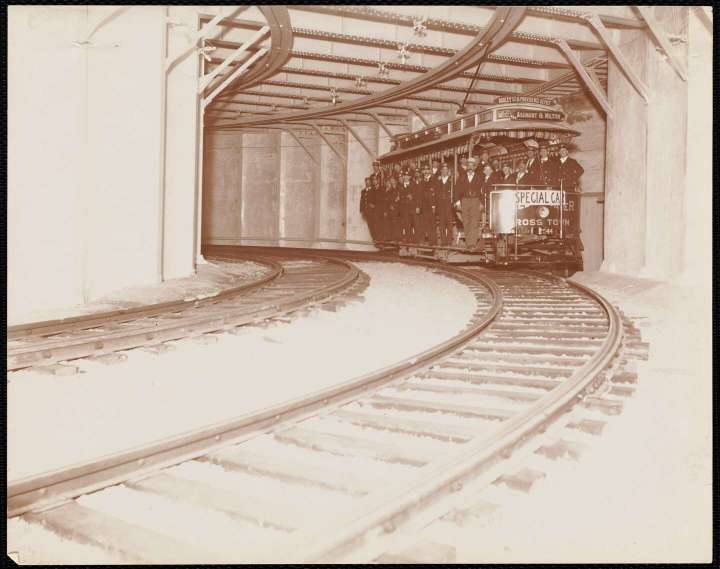On the morning of September 1, 1897, the residents of Boston, Massachusetts, woke up to the dawn of a new era in public transportation.
Boston’s subway, the oldest in the U.S., turns 125 years old

If it was history in the making, it was brief. The one-mile ride lasted just three minutes. Even so, onlookers cheered wildly when the trolley pulled into the Park Street Station.
With the promise of more stations to be built, Bostonians looked forward to no longer having to slog through mud and snow on horseback or on foot, or spending hours in buggies and trolleys stalled on the city’s traffic-choked streets.
Residents of London, England, had been riding the world’s first subway system for 34 years. A demonstration model in New York City had failed, but Glasgow, Scotland, and Budapest, Hungary, had successfully started subways the year before. Now it was Boston’s turn.
Engineers developed a building style called “cut and cover.” Trenches were dug along the street in sections 10 feet long, 12 feet wide and 6 feet deep. The trenches were lined with concrete, and a brick arch or steel supports were added across the top so the road could be restored.
Damage to nearby buildings was minimal, but the project was not without setbacks. Workers unexpectedly unearthed hundreds of bone fragments from unmarked graves, prompting the newspaper headline “Hideous Germs Lurk in Underground Air.” Then, when a water main broke and flooded nearby offices, a pastor called the subway project the work of the devil.
The biggest accident was a huge gas explosion in March 1897 that rocked the area around Tremont and Boylston streets. Sparks off a passing streetcar had ignited a large pocket of natural gas trapped between the roof of the tunnel and the street above. Streetcars were tossed into the air in flames, the ground shook, and glass rained down from offices and store windows.
Ten people were killed, and 60 were seriously injured.
The disaster did nothing to soothe those people nervous about traveling underground, but the tunnel itself was not damaged and work continued. The first leg of the subway opened a few months later, on time and under budget.
It wasn’t long before other cities had subways: Paris, France, in 1900; Berlin, Germany, in 1902; and New York City in 1904.
More than 100,000 rides were taken on the Boston subway on its first day. Today the subway is part of the Massachusetts Bay Transportation Authority (which includes bus, commuter rail and travel by ferry). About 360,000 subway rides are taken each weekday.
Unearthing subway facts
More than 200 cities in 61 countries have subway transit systems.
The word “subway” means underground passage. But subways aren’t always underground, and they aren’t always called subways. Boston’s is known as “the T,” the London Underground is called “the Tube,” and dozens of cities (including Washington, D.C.) call it the Metro.
Comparing systems for size and ridership is like comparing apples and oranges. Some cities’ mileage totals include bus routes and suburban rail lines. Some transit officials count transfers as two rides, not one. That said, here are a few fun subway facts:
China’s Shanghai transit system set a one-day ridership record of 13.2 million in March 2019. The system has nearly 500 miles of track. Its longest line stretches 50 miles to a Disney resort.
The New York City Subway has the most stations: 472. In 2019, before the coronavirus pandemic, the system averaged nearly 5.5 million weekday riders. Washington, D.C., has the country’s fourth-busiest transit system behind Chicago and Boston.
Subway cars heading into Moscow, Russia, have a recording with a male announcer; those heading away have a woman’s voice. Tour guides say the system, which helps blind passengers, is a reminder that “your boss calls you to work; your wife calls you home.” (We’re not sure how this works when it’s the wife going to work and the husband who’s staying home.)
Subway stations were used as air-raid shelters in London during both world wars, and in Kyiv, Ukraine, earlier this year.
Travel underground and see how they did it. “Beneath the Streets of Boston: Building America’s First Subway” explores how miles of tunnels were dug beneath Boston and its harbor to ease the growing gridlock above. Author Joe McKendry, an artist, also illustrated this captivating story for ages 6 to 12.






